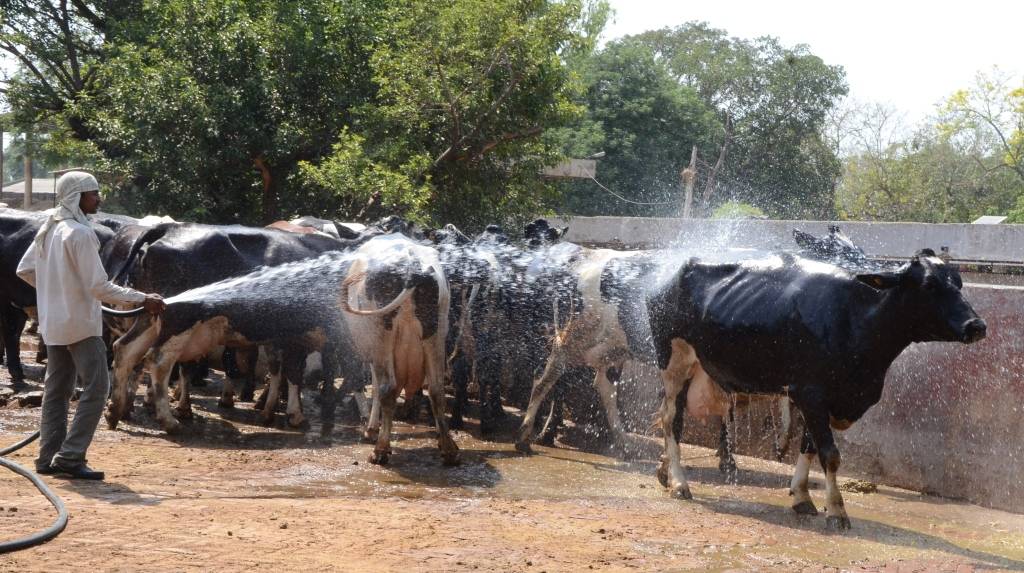
Like human beings, animals too suffer from heat intolerance, particularly when they are left in the direct sun and they do not get adequate water. Domestic animals and poultry birds are particularly vulnerable to the heatwave. Hyperthermia (Heat intolerance syndrome) is one of the commonly encountered problems among dairy animals of Punjab. Dr SK Uppal, Professor-cum-Head, Department of Veterinary Medicine, GADVASU revealed that the disease is more prevalent in exotic and crossbred animals followed by buffaloes and indigenous cows. The condition results due to high environmental temperature and humidity. Under such conditions, heat load increases and thermal steady state of the body cannot be maintained which leads to rise in body temperature and the onset of hyperthermia. Panting (marked increase in respiration rate), marked decrease in appetite and major loss of milk production are the common manifestations. The most common factor in the occurrence of this disorder is poor ventilation and this condition also occurs as an aftereffect of foot and mouth disease (FMD) in cattle due to damage to heat regulation control in the brain. This condition is non-responsive to conventional antipyretic and antibiotics treatment regimen.
Dr S N S Randhawa, Research Advisor and Professor, Veterinary Medicine said that Hyperthermia is mostly observed during months of May to September with maximum cases recorded during months of July and September. During humid weather, the ambient temperature and relative humidity frequently exceed the critical comfort level of the temperature-humidity index (72), resulting in elevated body temperature and panting. The temperature-humidity index (THI) describes the effect of the environment on animal’s ability to dissipate heat
Dr Uppal revealed that a study conducted by Dr Sushma Chhabra, Dr CS Randhawa and Dr SNS Randhawa, on dairy animals during a research work revealed that subcutaneous administration of 5 ml iodized oil (containing 750 mg of elemental iodine) for three consecutive days was a highly effective treatment of hyperthermia. More than 95 per cent of the hyperthermic dairy animals recovered with this therapeutic regimen and no relapse was recorded during the post-treatment period of two months. The response of the treatment was ascribed to increase in the thyroxine levels. Thyroxine, being an inhibitory hormone of thyroid loop, had a negative feedback effect on thyroid-stimulating hormone (TSH) that suppresses heat-regulating centre in the brain of hyperthermic animals.
He advised farmers to provide an ample quantity of water to animals; keep them away from direct sunlight in well-ventilated places and give bath to dairy animals 3-4 times a day. Give plenty of rest to allow the natural cooling system to work. If strenuous activity is required or you are to feed your animals, get it done during the coolest part of the day (early morning and evening). In case of high fever, dairy farmers should get the blood of their animals examined at GADVASU for tick-borne diseases and for other infections















